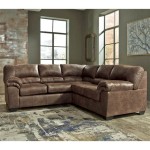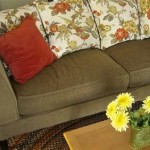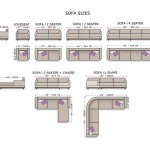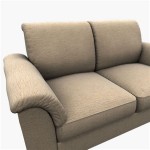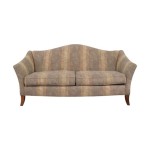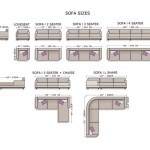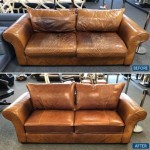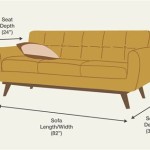Victorian Sofas and Chairs: A Study in Comfort and Opulence
The Victorian era, spanning from 1837 to 1901, witnessed a significant transformation in furniture design and production. Technological advancements, coupled with evolving social norms and a burgeoning middle class, led to the widespread availability and increased demand for comfortable and aesthetically pleasing furniture pieces. Sofas and chairs, central to domestic life, experienced a particularly dramatic evolution, reflecting the Victorian emphasis on comfort, ornamentation, and social display. The furniture styles of this period drew inspiration from various historical sources, resulting in a rich and diverse range of designs that continue to fascinate and influence interior design today.
Victorian furniture, in general, was characterized by its eclecticism. Unlike the more unified stylistic movements of earlier periods, the Victorian era embraced a medley of influences, including Gothic Revival, Rococo Revival, Renaissance Revival, and Aesthetic Movement principles. This blending of styles resulted in pieces that were often highly ornamented, featuring elaborate carvings, rich upholstery, and a profusion of decorative details. The availability of new manufacturing techniques, such as steam-powered machinery and mass production, allowed for more intricate designs and faster production times, making ornate furniture more accessible to a wider range of consumers.
The sofa, in particular, became a statement piece in the Victorian home. It was not merely a functional object for seating; it was a symbol of status, comfort, and hospitality. Likewise, individual chairs, from armchairs to parlor chairs, played a crucial role in defining the character and atmosphere of a room. The design and construction of these pieces reflected the Victorian preoccupation with creating a comfortable and aesthetically pleasing domestic environment.
Key Features of Victorian Sofa Design
Victorian sofas exhibited several defining characteristics that distinguished them from earlier and later styles. These features reflected the Victorian values of comfort, ornamentation, and social display. A closer examination of these characteristics reveals the evolution of sofa design during this transformative era.
One of the most noticeable features of Victorian sofas was their generous proportions and emphasis on comfort. Sofas were typically large and deeply cushioned, designed to provide a comfortable and inviting seating experience. The use of coil springs in the upholstery contributed to the enhanced comfort, and cushions were often filled with feathers, horsehair, or other soft materials. The overall effect was a plush and inviting seating arrangement that encouraged relaxation and socializing.
Another defining characteristic was the extensive use of ornamentation. Victorian sofas were often adorned with elaborate carvings, button-tufted upholstery, and decorative fringes or tassels. The carvings might feature floral motifs, scrollwork, or depictions of animals or mythological figures. Button-tufting, a technique involving the use of buttons to create a diamond or grid pattern on the upholstery, added depth and visual interest. The use of fringes and tassels further enhanced the ornate appearance of the sofa. These decorative details reflected the Victorian appreciation for craftsmanship and attention to detail.
The upholstery fabrics used on Victorian sofas were typically rich and luxurious. Velvet, damask, brocade, and silk were popular choices, often featuring intricate patterns and vibrant colors. The choice of fabric was not merely a matter of aesthetics; it also reflected the owner's social status and taste. The combination of rich fabrics and elaborate ornamentation created a visually stunning and opulent seating arrangement.
The legs of Victorian sofas were also often highly ornamented, featuring cabriole legs, scroll feet, or other decorative details. The legs were typically made of wood, such as walnut, mahogany, or rosewood, and were often stained or polished to enhance their natural beauty. The design of the legs contributed to the overall aesthetic appeal of the sofa and reinforced the Victorian emphasis on ornamentation.
Characteristics of Victorian Chairs
Victorian chairs, like sofas, reflected the era's emphasis on comfort, ornamentation, and social display. A wide variety of chair styles emerged during this period, each designed for a specific purpose and reflecting the evolving social norms of the time. From ornate parlor chairs to comfortable armchairs, Victorian chairs played a crucial role in defining the character and atmosphere of the Victorian home.
One of the defining characteristics of Victorian chairs was their diverse range of styles. The Victorian era witnessed a proliferation of chair designs, each drawing inspiration from different historical sources. Gothic Revival chairs featured pointed arches and ornate carvings, while Rococo Revival chairs were characterized by their curvaceous lines and floral motifs. Renaissance Revival chairs often incorporated classical elements, such as pilasters and pediments. This eclecticism reflected the Victorian desire to emulate the past while embracing new technologies and design innovations.
Another key feature of Victorian chairs was their emphasis on comfort. Armchairs were designed to provide a comfortable and supportive seating experience, with generously padded seats and backs. The use of coil springs in the upholstery contributed to the enhanced comfort. Parlor chairs, while often less comfortable than armchairs, were designed to be visually appealing and to complement the overall decor of the room. The emphasis on comfort reflected the Victorian values of domesticity and relaxation.
The ornamentation of Victorian chairs varied depending on the style and purpose of the chair. Parlor chairs were often highly ornamented, featuring elaborate carvings, button-tufted upholstery, and decorative fringes or tassels. Armchairs, while often less ornate than parlor chairs, still incorporated decorative details, such as carved armrests and decorative nails. The level of ornamentation reflected the chair's role in the social display of the Victorian home.
The materials used in the construction of Victorian chairs were typically high-quality and durable. Wood, such as walnut, mahogany, and rosewood, was commonly used for the frames and legs. Upholstery fabrics included velvet, damask, brocade, and silk, often featuring intricate patterns and vibrant colors. The use of high-quality materials ensured that Victorian chairs were both beautiful and long-lasting.
Materials and Construction Techniques
The materials and construction techniques employed in the creation of Victorian sofas and chairs played a significant role in their durability, comfort, and aesthetic appeal. The availability of new technologies and materials, coupled with the Victorian emphasis on craftsmanship, resulted in furniture pieces that were both beautiful and well-made. Understanding the materials and techniques used in the construction of these pieces provides valuable insights into the Victorian era's approach to furniture design and production.
Wood was the primary material used for the frames and legs of Victorian sofas and chairs. Popular choices included walnut, mahogany, rosewood, and oak. These woods were chosen for their strength, durability, and aesthetic appeal. Walnut and mahogany were particularly prized for their rich color and fine grain, while rosewood was valued for its exotic beauty. Oak was a more affordable option that was often used for less ornate pieces. The wood was typically kiln-dried to prevent warping and cracking, and it was carefully shaped and joined using traditional woodworking techniques.
Upholstery was another crucial element in the construction of Victorian sofas and chairs. The choice of upholstery fabric was influenced by factors such as cost, durability, and aesthetic appeal. Velvet, damask, brocade, and silk were popular choices for more expensive pieces, while less expensive fabrics, such as cotton and linen, were used for more utilitarian items. The upholstery was typically applied over a layer of padding, which could consist of feathers, horsehair, or other soft materials. Button-tufting was a common technique used to create a diamond or grid pattern on the upholstery, adding depth and visual interest.
The use of coil springs in the upholstery represented a significant advancement in furniture design. Coil springs provided enhanced comfort and support, making Victorian sofas and chairs more comfortable than their predecessors. The springs were typically made of steel and were carefully arranged within the frame of the piece. The upholstery was then applied over the springs, creating a comfortable and resilient seating surface. The introduction of coil springs revolutionized the design and construction of upholstered furniture.
The finishing techniques used on Victorian sofas and chairs were designed to enhance their beauty and protect them from wear and tear. Wood surfaces were typically stained or polished to bring out their natural color and grain. Varnish was often applied to create a protective layer that would resist scratches and water damage. Upholstery fabrics were often treated with stain repellents to protect them from spills and stains. These finishing techniques contributed to the longevity and aesthetic appeal of Victorian furniture.
The combination of high-quality materials and skilled craftsmanship resulted in Victorian sofas and chairs that were both beautiful and durable. These pieces were designed to last for generations, and many examples survive today as testament to the quality of Victorian furniture production.

17 Divine Victorian Furniture Ideas For Elegant Timeless Interior Formal Living Room Sets Classic

Ekar Classic Antique Living Room Furniture Wooden Carved Royal Victorian Sofas Set 7 Seater Luxury Home French Style China Sofa Made In Com

Antique Furniture Reion Italian Classic Sofa Set In Victorian Style Vict Living Room

Leonie Victorian Style Living Room Furniture

French Royal Style Antique Victorian Vintage Flower Fabric Wooden Hand Carved Furniture Gold Classic Living Room Sofas China Leather Sofa Set Made In Com

Victoria Classic Sofa Set Models Luxury Living Room

Victoria Classic Sofa Set Models Luxury Living Room

Victorian Carving Sofa Set Furniture

Modern Victorian Sofa Luxury Furniture Classic

French Royal Style Antique Victorian Vintage Flower Fabric Wooden Hand Carved Furniture Gold Classic Living Room Sofas China Leather Sofa Set Made In Com

